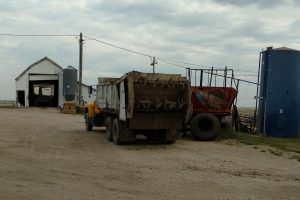by Justin Waggoner, Beef Systems Specialist, Garden City
Many of the challenge’s cattle producers face are essentially about managing variability. Our management decisions/practices are often dictated by changes in weather, markets, genetics, animal performance and many other factors. There are a variety of tools that have been created to help cattle producers manage different sources of variability and predict animal performance. Today we often think of complex tools like EPDs or genomic testing. However, simple tools such as body condition scoring and analytical testing of feeds are also tools that should be included in this list. Although it is often overlooked, the underlying reason we evaluate the chemical composition of feedstuffs is to gather data that can be used to more efficiently manage our feed resources and more accurately predict animal performance.
Continue reading “Testing feedstuffs, another tool in the management toolbox”

